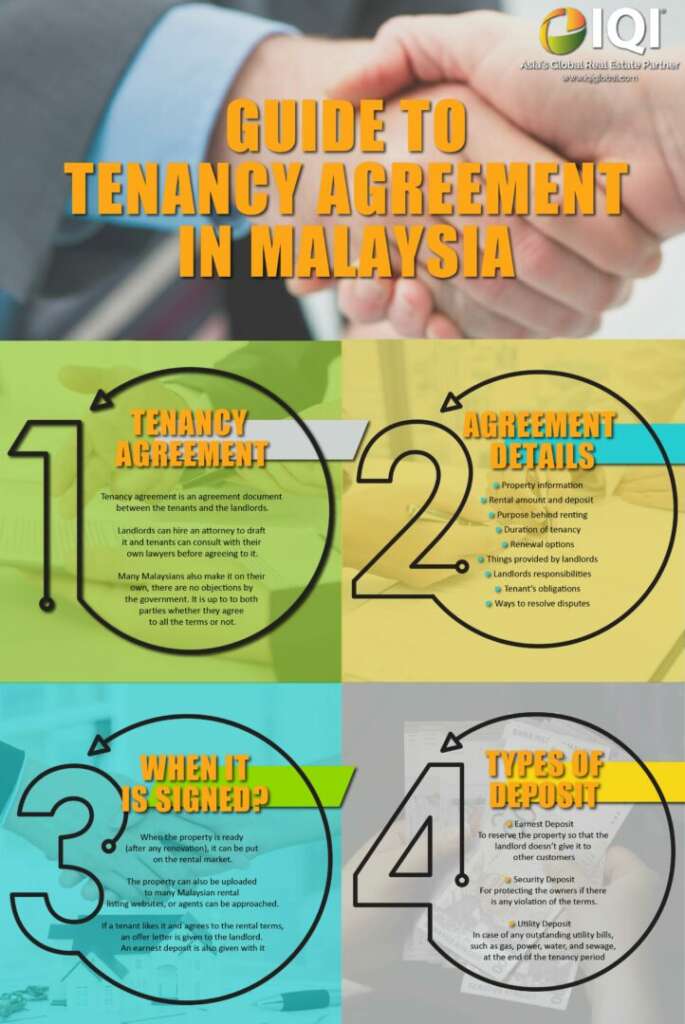If you own a property or occupy one from a landlord, you might be familiar with something called a tenancy agreement. Even if you are not, sooner or later, you will hear about it.
So, what is a tenancy agreement?
In simple words, a tenancy agreement refers to an agreement document between the tenant and the landlord which contains all the information about the terms of the tenancy, including the responsibilities and rights of both parties during the tenancy period. This document also provides detailed information about the property.
To make a proper document, landlords can hire an attorney to draft it and tenants can consult with their own lawyers before agreeing to it. However, many Malaysians make it on their own, and then ask the tenants to accept it, since hiring an attorney can be expensive. In Malaysia, there are no objections by the government in adding terms by both the parties. It is simply up to them whether they agree to all the clauses or not. A tenancy agreement is very important to give justice to the landlord and the tenant.
Points to be included in a tenancy agreement
A tenancy contract covers many details, as it is about what a person can do and what they cannot do with their property. Each side will have their own conveniences that they should put forth in this document before signing it. The wording should also be carefully done to ignore any kind of misunderstandings.
Basically, a tenancy agreement should include these points:
- Property details – the type of house, where it is located and what part is being rented (full, half or some parts)
- Rental amount and deposit times – the dates, exact monthly rent and the system of payment
- The purpose behind renting
- The duration of the tenancy
- The renewal options
- Things being provided by the landlord(s) – furniture and other utilities
- The landlord(s) responsibilities – Annual property taxes and insurance policies for the property
- Tenant’s obligations – paying the charges and maintenance
- Ways to resolve disputes
When is the agreement signed?
The usual sequence of signing the agreement is:
- When the property is ready (after any renovation), it can be put on the rental market.
- The property can also be uploaded to many Malaysian rental listing websites, or agents can be approached.
- If a tenant likes it and agrees to the rental terms, an offer letter is given to the landlord. An earnest deposit is also given with it.
- Seven days are given to both the parties to sign the agreement. A security deposit and utility deposit needs to be paid by the tenant.
- After this, the signed contract becomes an official legal document.
The deposits paid by the tenants
There are three kinds of deposits that tenants need to pay:
- Earnest Deposit:
The deposit that is paid to reserve the property so that the landlord doesn’t give it to other customers during the seven days signing period is called an earnest deposit. This deposit is given by the would-be tenant to the owners together with the offer letter. The amount is equal to the first month’s rent. This deposit is usually considered as the first month’s rent when the tenant starts living. It can even be used as a security deposit.
- Security Deposit:
Security deposit is for protecting the owners if there is any violation of the terms by the tenants. The landlord has the right to cut expenses from this deposit or can even give notice to leave the house depending on it. However, if the tenants makes no mistakes during their tenancy period, this deposit should be given back to them at the end of the tenancy.
- Utility Deposit:
This deposit is kept in case of any outstanding utility bills, such as gas, power, water, and sewage, at the end of the tenancy period. Most of the time, the total is half the rent for one month.
These security and utility deposits are paid to the landlords before the signing of the agreement.
Overall these are the important points that need to be given attention to about tenancy agreements in Malaysia. Now that you know this information, no one can misguide you, whether you are a landlord or a tenant.
This article is written by Rahnama Haque
Want to know more about tenancy agreements? Just fill in the form below and we will contact you with more details.

